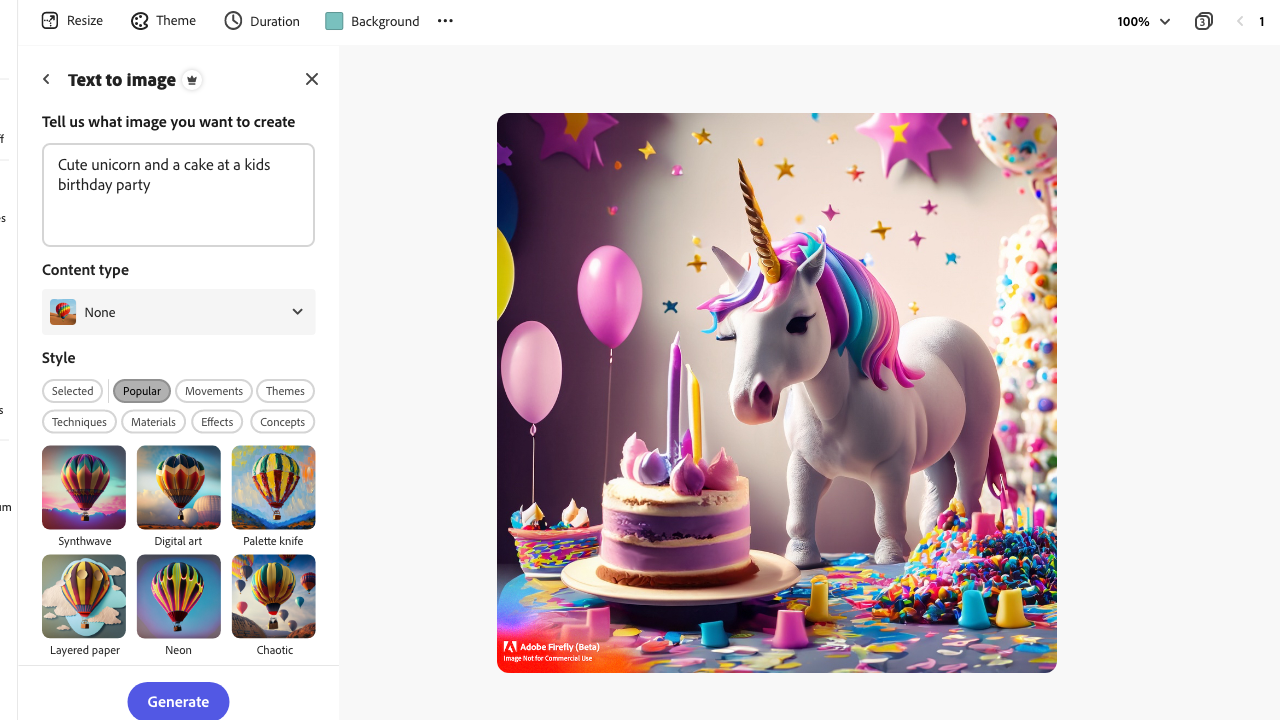
Google's conversational AI chatbot has been instrumental to helping scribes and storytellers fend off writer's block, but what about visual artists? How can Bard stimulate their creative juices while lacking the ability to generate images?
Well, all of that is about to change, thanks to Google's new collaboration with Adobe. The software company, best known for popular content creation platforms like Photoshop and Illustrator, announced that it's bringing Firefly (Adobe's family of generative AI tools) and Adobe Express to Bard.
What is Firefly?
For the uninitiated, Firefly is Adobe's family of AI models that allows creative users to generate images, audio, vectors, 3D content, and videos from text descriptions. To put it succinctly, with just the power of your words, you can create anything with Firefly.
Firefly is still in its early stages. Adobe rolled out its Firefly beta program in March, which allowed a limited set of users to test its new AI tools for a short period of time. The software company boasted that it was its most successful beta launch in its 40-year history; 70 million images were generated in the first five weeks.
I haven't used Firefly myself, but according to the trailer below, it's pretty darn cool. For example, with Firefly, you can transform a summery photo filled with lush, verdant vegetation into a wintry one that's devoid of life by simply typing "change scene to winter day."
Firefly AI keeps the important, key elements in the photo, but adds snow, strips away the leaves on the tree, and swaps warm tones for cooler hues. And that's just a modicum of Firefly's capabilities.
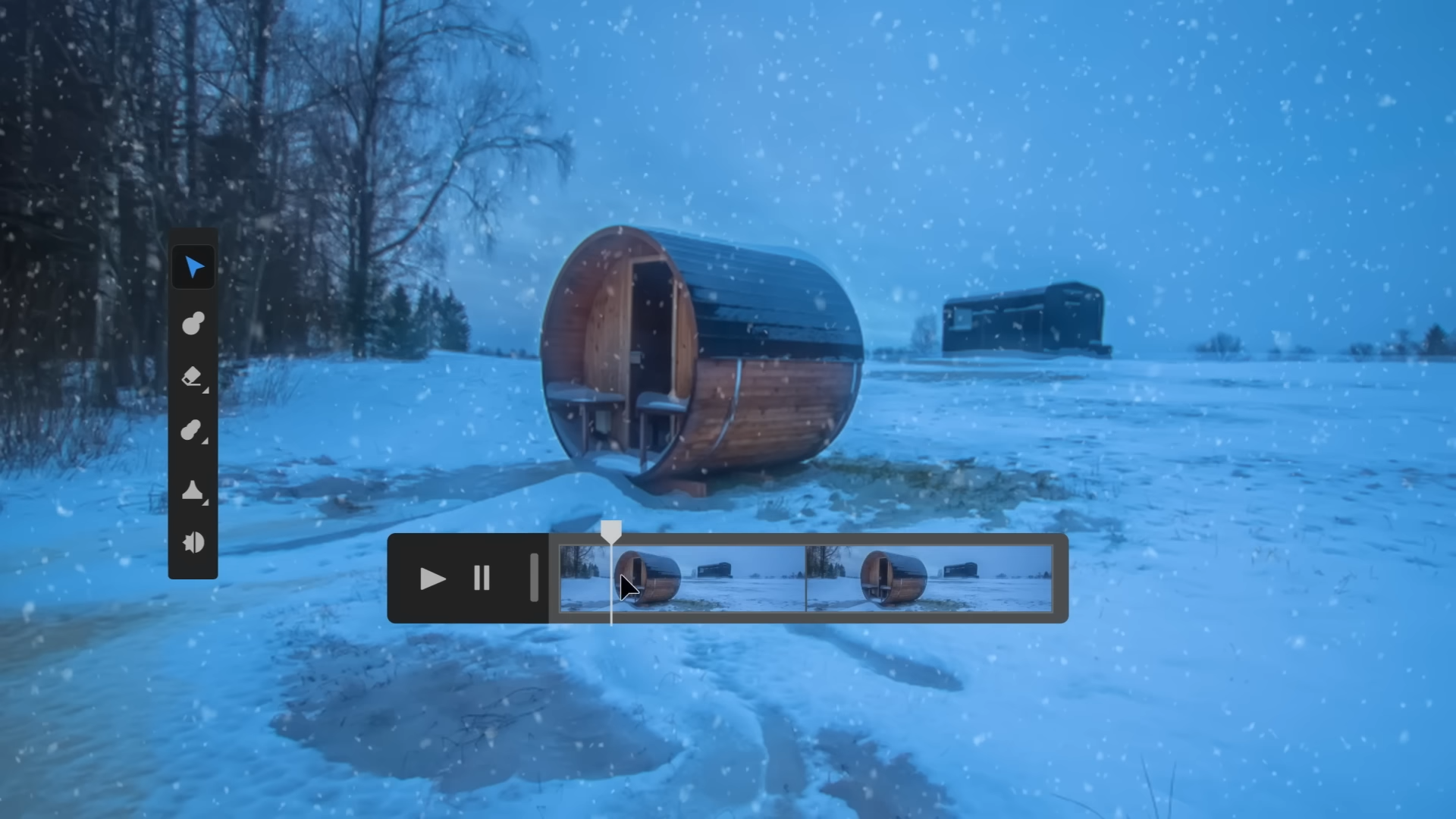
Now, Firefly, as well as Adobe Express, will underpin Google Bard to help artists with their creative projects.
How Adobe Firefly will make Google Bard even more awesome
Harnessing Firefly's incredible text-to-image capabilities, users will have the ability to articulate their creative vision directly in Google Bard. Once an image has been generated, you can edit it in Adobe Express, which will be embedded in the Bard platform.
For example, in Bard, you can type, "Make an image of a unicorn and a cake at a kids party."
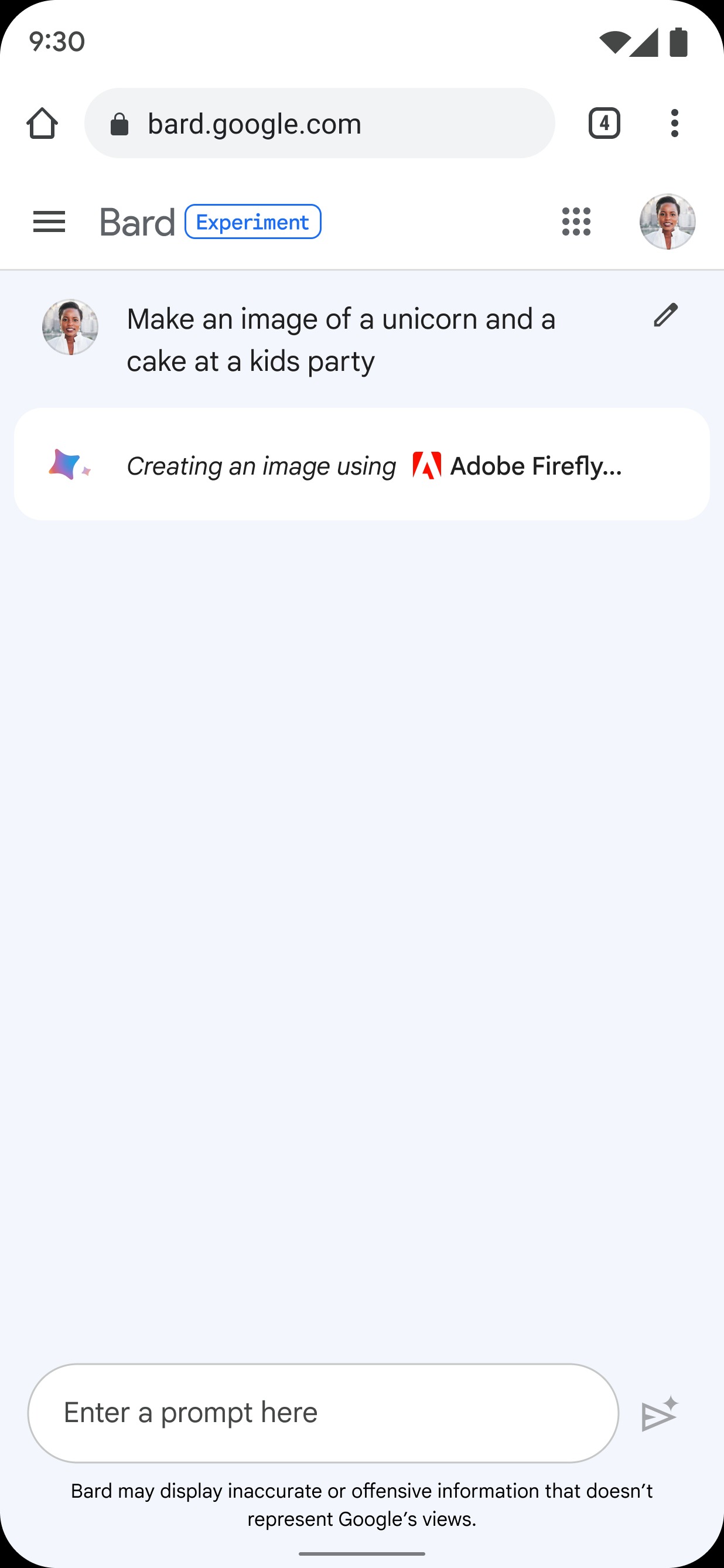
And voila, thanks to the power of Adobe Firefly, you'll get a few options stemming from your prompt.
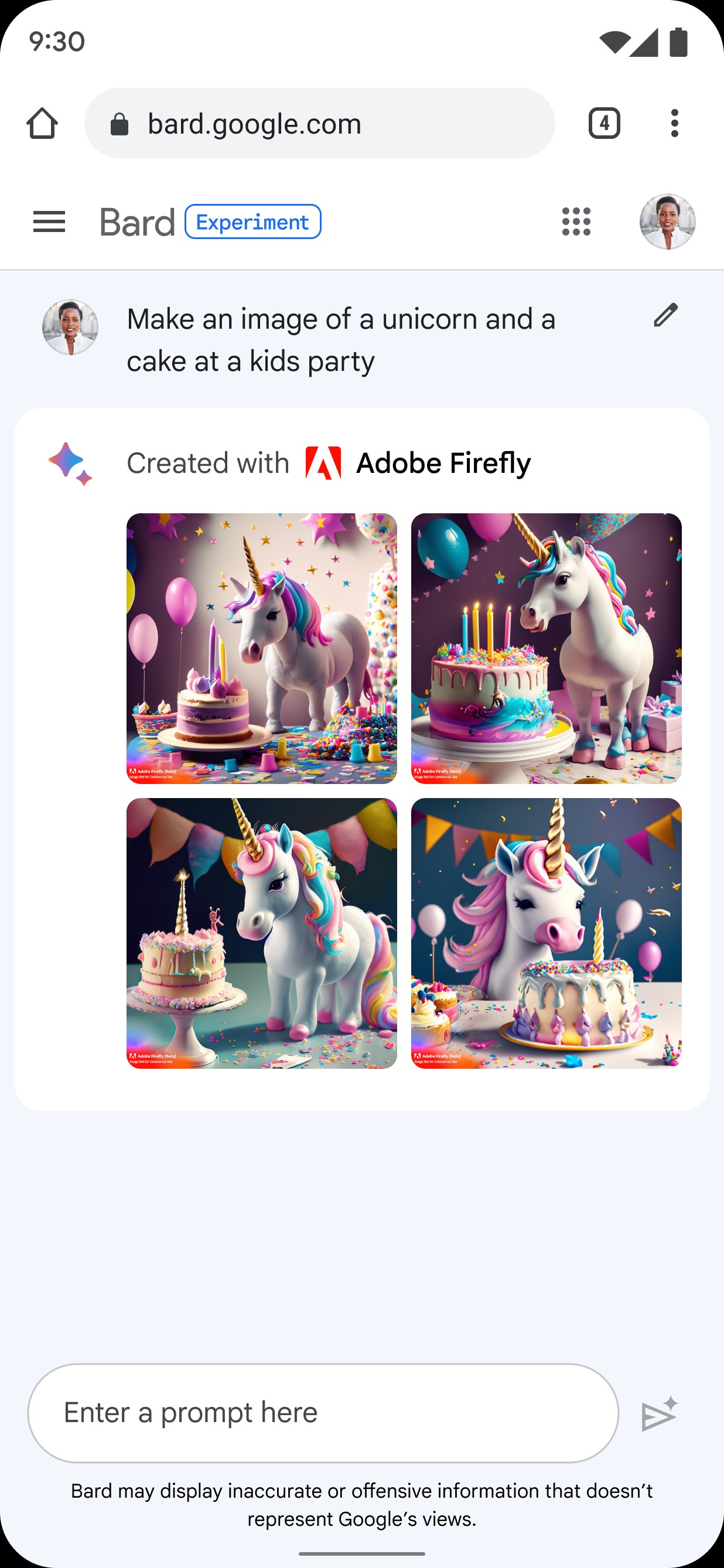
You can then choose your favorite and continue to edit it with Adobe Express. In the photos below, the user is modifying the image to create cute unicorn party invitations.

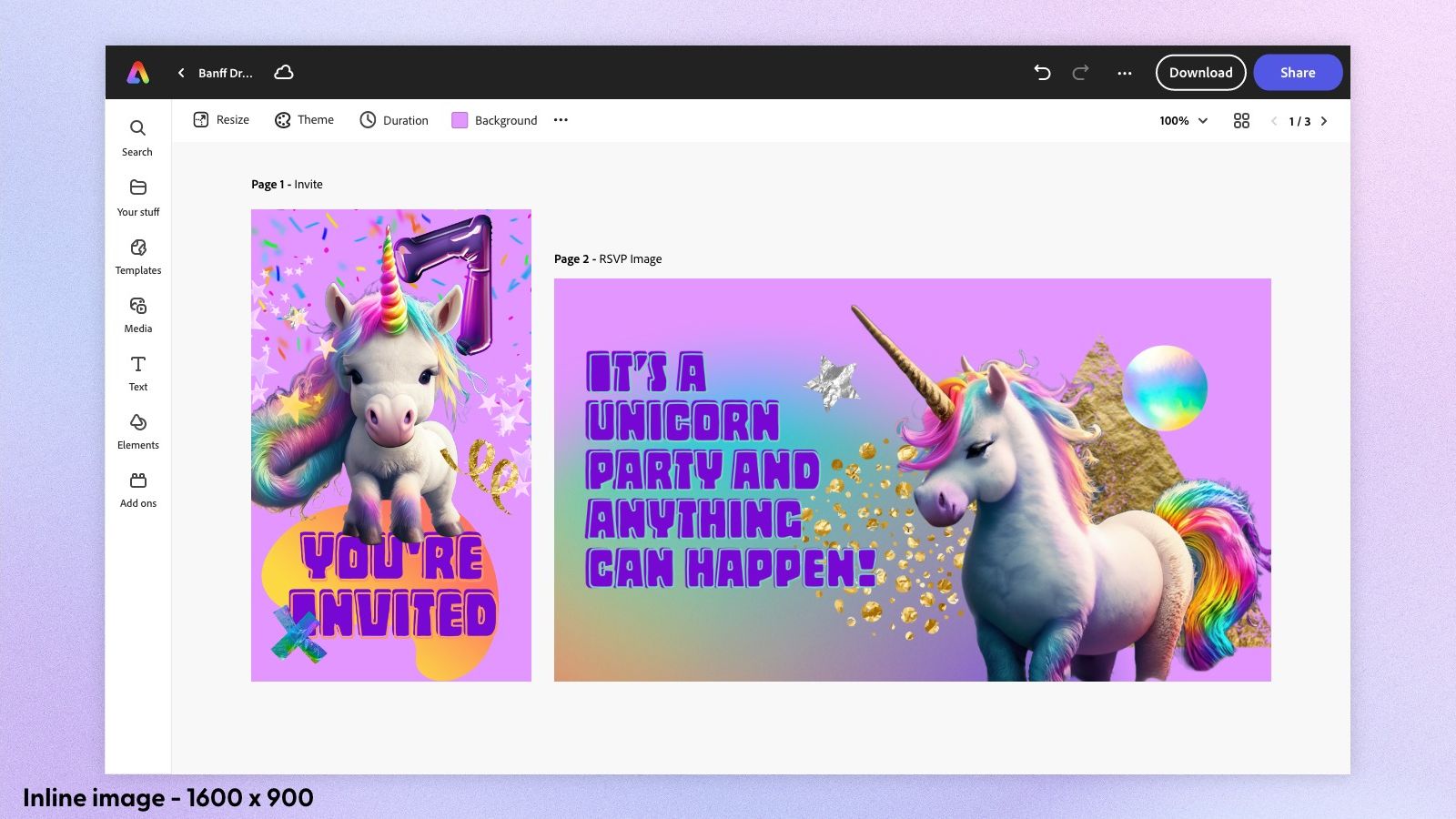
What makes Firefly different from other text-to-image AI services? According to a press release, it's "designed to generate images that are safe to use in commercial settings once the model is out of public beta — free from copyrighted materials like popular cartoon characters and branded content."
In other words, once you're done creating, you can post your final masterpiece to your social media channels via Express — and you don't have to worry about any licensing predicaments. Firefly in Bard is trained with professional-grade, licensed images from Adobe Stock; it uses public domain pictures, too.
Neither Adobe nor Google announced an launch date for the Firefly-integrated Bard, but mentioned that it's coming in the near future. We'll be sure to update this page when we get an official date.







